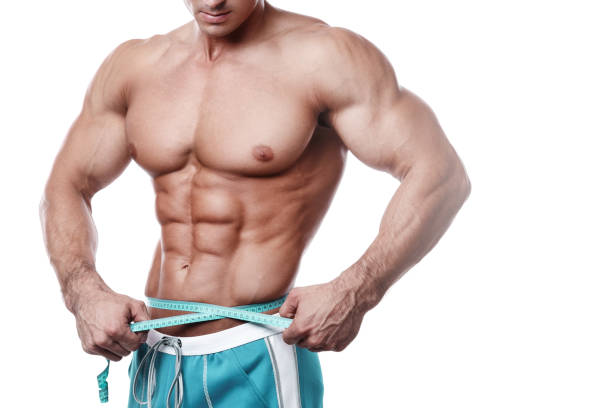A cutting diet is essential for bodybuilders aiming to shed fat while maintaining lean muscle. It requires a strategic balance of calories, macronutrients, and meal timing to achieve the desired shredded physique. Unlike bulking, where the goal is to gain muscle mass, cutting focuses on reducing body fat without sacrificing hard-earned muscle. Here’s a comprehensive guide to structuring the perfect cutting diet for your bodybuilding goals.
The Basics of a Cutting Diet
At its core, a cutting diet involves a calorie deficit—consuming fewer calories than you burn. However, to preserve muscle while cutting, the diet must be high in protein, moderate in fats, and adjusted for carbohydrates depending on activity levels.
- Calorie Deficit: Calculate your maintenance calories and reduce by 10–20% to start.
- Macronutrient Breakdown: Aim for approximately 40% protein, 30% carbs, and 30% fats, though these ratios can be adjusted to suit your needs.

Tracking your macros is critical to ensure you’re getting the right balance to fuel your workouts and recovery.
High-Protein Intake: The Muscle Saver
Protein is the cornerstone of any cutting diet. It prevents muscle loss during a calorie deficit and supports recovery after intense workouts. Opt for high-quality protein sources:
- Chicken breast, turkey, and lean beef: Low in fat and high in protein.
- Eggs and egg whites: Versatile and nutrient-rich.
- Fish: Salmon and tuna provide healthy fats and protein.
- Plant-based options: Lentils, tofu, and tempeh for variety.
Consume about 1.2–2.0 grams of protein per kilogram of body weight daily, spaced evenly across meals.
Moderate Carb Intake: Energy and Performance
Carbohydrates provide the energy you need for intense training sessions. While reducing carbs is a hallmark of cutting, strategically timing your intake ensures you perform well in the gym:
- Pre-Workout: Complex carbs like oats, brown rice, or quinoa for sustained energy.
- Post-Workout: Faster-digesting carbs like white rice or sweet potatoes to replenish glycogen.
- Vegetables: Cruciferous and leafy greens for fiber and essential nutrients.
Avoid simple sugars and processed carbs, which can lead to energy spikes and crashes.
Healthy Fats: The Unsung Hero
Dietary fats are crucial for hormone regulation, especially testosterone, which is vital for muscle maintenance and fat loss. Include healthy fat sources in your meals:
- Avocados
- Nuts and seeds
- Olive oil
- Fatty fish
 Fats should make up about 20–30% of your daily calorie intake, ensuring you’re still in a calorie deficit.
Fats should make up about 20–30% of your daily calorie intake, ensuring you’re still in a calorie deficit.
Timing Matters: Meal Frequency and Timing
Meal timing can optimize energy levels and prevent muscle breakdown. Spread meals throughout the day to maintain a steady nutrient flow:
- Breakfast: Break the overnight fast with a protein and complex carb combo.
- Pre-Workout Meal: Carbs and protein to fuel your session.
- Post-Workout Meal: High-protein and moderate-carb meal to kickstart recovery.
- Evening Meal: Lean protein and healthy fats for muscle repair during sleep.
Hydration: The Forgotten Element
Water plays a significant role in muscle function and fat metabolism. During a cutting phase, hydration is especially important as high-protein diets and intense training can dehydrate you.
- Drink at least 3–4 liters of water daily.
- Include hydrating foods like cucumbers, watermelon, and leafy greens.
- Electrolyte drinks can be beneficial, especially during workouts.
Sample Cutting Diet Plan
Here’s an example of what a day on a cutting diet might look like:
Breakfast
- 3 egg whites, 1 whole egg
- 1/2 cup oatmeal with a handful of berries
Morning Snack
- 1 medium apple
- 1 scoop whey protein shake
Lunch
- Grilled chicken breast (150g)
- 1/2 cup quinoa
- Steamed broccoli
Pre-Workout Meal
- Sweet potato (100g)
- 1 can of tuna with a drizzle of olive oil
Post-Workout Meal
- 1 scoop whey protein
- 1 banana
Dinner
- Baked salmon (150g)
- Mixed salad with avocado and olive oil dressing
Evening Snack
- Cottage cheese or Greek yogurt with a handful of almonds
Tips to Maximize Cutting Success
- Track Everything: Use an app or journal to monitor your calorie and macro intake.
- Meal Prep: Plan meals in advance to avoid impulsive, unhealthy choices.
- Adjust as Needed: Regularly assess progress and tweak your calorie intake or macros.
- Cheat Meals, Not Days: Allow for an occasional indulgence to stay mentally on track without derailing progress.
- Incorporate Cardio: Add a mix of steady-state and HIIT cardio to complement your diet.
Common Pitfalls to Avoid
- Too Large a Deficit: Drastically cutting calories can lead to muscle loss and fatigue.
- Overtraining: Ensure adequate recovery to prevent burnout and injuries.
- Ignoring Fiber: A low-fiber diet can lead to digestive issues—include plenty of vegetables.
- Underestimating Fats: Cutting fats too much can negatively impact hormone levels and energy.
A bodybuilding cutting diet requires precision and discipline but can yield incredible results when executed properly. By focusing on high-protein meals, healthy fats, and strategic carb timing, you’ll preserve muscle while shredding fat. Stick to the plan, stay consistent, and watch your hard work in the gym translate into a sculpted, competition-ready physique.
References
-
Helms, E. R., Aragon, A. A., & Fitschen, P. J. (2014). Evidence-based recommendations for natural bodybuilding contest preparation: nutrition and supplementation. Journal of the International Society of Sports Nutrition, 11(1), 20. https://doi.org/10.1186/1550-2783-11-20
-
Morton, R. W., Murphy, K. T., McKellar, S. R., Schoenfeld, B. J., Henselmans, M., Helms, E., … & Phillips, S. M. (2018). A systematic review, meta-analysis and meta-regression of the effect of protein supplementation on resistance training–induced gains in muscle mass and strength in healthy adults. British Journal of Sports Medicine, 52(6), 376–384. https://doi.org/10.1136/bjsports-2017-097608
-
Slater, G., & Phillips, S. M. (2011). Nutrition guidelines for strength sports: sprinting, weightlifting, throwing events, and bodybuilding. Journal of Sports Sciences, 29(sup1), S67–S77. https://doi.org/10.1080/02640414.2011.574722
-
Campbell, B., Kreider, R. B., Ziegenfuss, T., La Bounty, P., Roberts, M., Burke, D., … & Antonio, J. (2007). International Society of Sports Nutrition position stand: protein and exercise. Journal of the International Society of Sports Nutrition, 4(1), 8. https://doi.org/10.1186/1550-2783-4-8
-
Antonio, J., Ellerbroek, A., Silver, T., Vargas, L., & Peacock, C. A. (2016). A high protein diet (3.4 g/kg/d) combined with a heavy resistance training program improves body composition in healthy trained men and women – a follow-up investigation. Journal of the International Society of Sports Nutrition, 13(1), 3. https://doi.org/10.1186/s12970-016-0114-2





